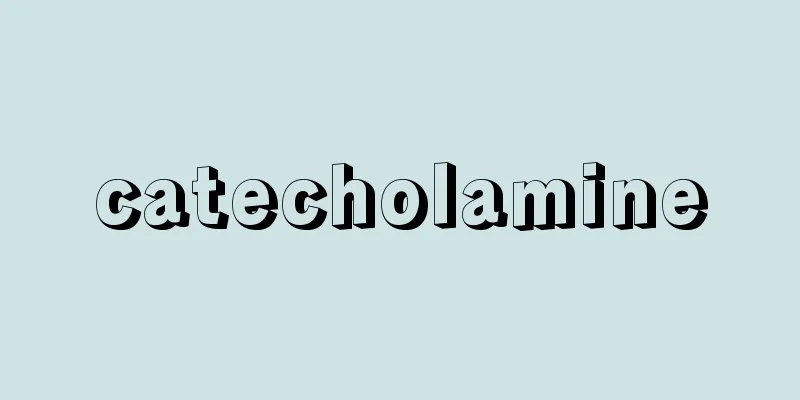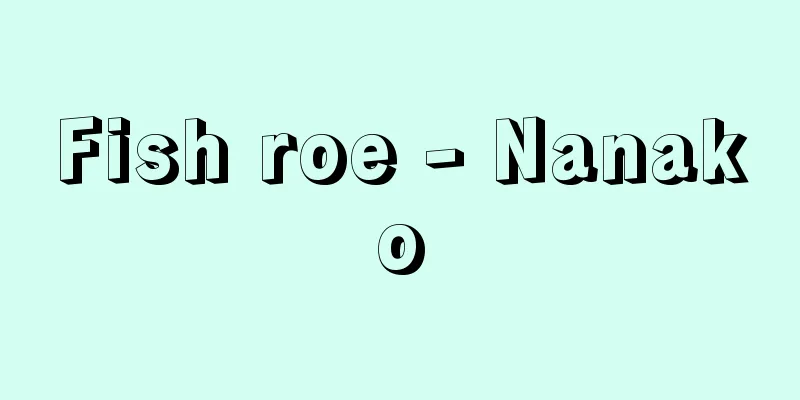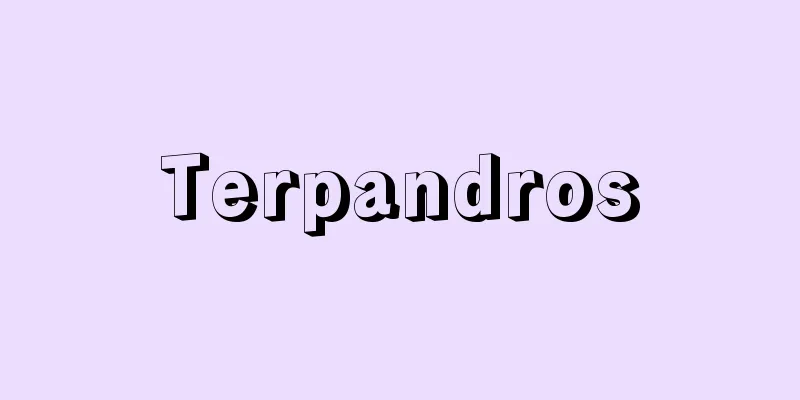catecholamine

|
(1) Biosynthesis and storage of catecholamines The biosynthesis of catecholamines begins with tyrosine and proceeds through a series of enzymatic reactions from tyrosine to DOPA (dihydroxyphenylalanine) to dopamine to noradrenaline to adrenaline (Figure 12-7-2). This process is called APUD (amine precursor uptake and decarboxylation). Of these reactions, only the dopamine to noradrenaline reaction takes place within granules, while the others take place in the cytoplasm (Figure 12-7-3). The reaction from tyrosine to DOPA by tyrosine hydroxylase (TH) is the rate-limiting step in catecholamine synthesis. TH is specifically expressed in cells that synthesize catecholamines and is subject to various types of regulation. The substrate, tyrosine, is taken up into the cells from the blood by active transport. The activity of TH is feedback-inhibited by intracellular catecholamines, and when nerve stimulation releases catecholamines and the intracellular concentration decreases, this inhibition is released, resulting in increased TH activity. TH activity is also increased by phosphorylation by cAMP-dependent protein kinase (PKA), Ca2 + /phospholipid-dependent protein kinase (PKC), and Ca2 + /calmodulin-dependent protein kinase. TH gene expression is increased by continuous nerve stimulation and glucocorticoids. The reaction from DOPA to dopamine is carried out by aromatic amino acid decarboxylase (AAADC). The generated dopamine is actively transported into catecholamine granules, where it is converted to noradrenaline by dopamine-β-hydroxylase (DBH). DBH expression is also increased by glucocorticoids and PKA. The reaction from noradrenaline to adrenaline takes place almost exclusively in the adrenal medulla in the periphery. Noradrenaline synthesized in the granules diffuses into the cytoplasm, where it is converted to adrenaline by phenylethanolamine-N-methyltransferase (PNMT), and then transported back into the granules for storage. Glucocorticoids enhance the expression and activity of PNMT, and the synthesized adrenaline exerts a feedback inhibition on PNMT activity. The adrenal medulla is constantly exposed to high concentrations of glucocorticoids secreted from the adrenal cortex, which maintains the activity of the catecholamine synthesis system, especially PNMT. Recently, small amounts of PNMT have been identified in the brain, heart, lungs, etc., and the possibility of adrenaline synthesis outside the adrenal gland has been proposed. Catecholamines are actively transported into the granules by the vesicular monoamine transporter 2 (VMAT2). 131I -metaiodobenzylguanidine (MIBG), used in imaging pheochromocytoma, is transported into granules by this mechanism, similar to catecholamines. Adrenaline, noradrenaline, and dopamine are stored in catecholamine granules, along with DBH, ascorbic acid, ATP, various neuropeptides, and chromogranin. Ascorbic acid is required as a cofactor for DBH, and ATP is required as an energy source for active transport. Chromogranins are highly acidic soluble proteins, and chromogranin A, chromogranin B (secretogranin I), chromogranin C (secretogranin II), secretogranin III, IV, V, BRCA1, NESP55, and proSAAS are collectively referred to as the granin family. Catecholamine granules contain large amounts of chromogranins A and B, which are thought to be involved in granule formation and the transport of hormones and their precursors into the granules. They are also cleaved by enzymes to become precursors of various physiologically active peptides such as pancreastatin, vasostatin, catestatin, and parastatin. Chromogranins are used as specific markers of neuroendocrine tissue in pathological diagnosis, and blood chromogranin concentrations are also used as an indicator to screen for neuroendocrine tumors such as pheochromocytoma. Neuropeptides contained in the granules include opioid peptides such as enkephalin, neuropeptide Y, substance P, VIP, somatostatin, galanin, calcitonin, and CGRP (calcitonin gene-related peptide). Others include adrenomedullin, endothelin, and C-type natriuretic peptide. Some pheochromocytomas also produce ACTH ectopically. (2) Release of catecholamines When adrenal medulla cells are depolarized by nerve stimulation, voltage-gated Ca channels open, allowing Ca2 + to flow into the cells, and then catecholamine granules fuse with the cell membrane, causing exocytosis (Figure 12-7-3). As a result, the catecholamines stored in the granules are released outside the cells along with other granule components, enter the circulating blood, and bind to receptors throughout the body to exert their physiological effects. (3) Metabolism of catecholamines Catecholamines secreted into the blood from the adrenal medulla are rapidly metabolized and inactivated mainly in the liver by two enzymes, catechol-O-methyltransferase (COMT) and monoamine oxidase (MAO). The main metabolic pathways are shown in Figure 12-7-4. Adrenaline and noradrenaline are O-methylated by COMT to become metanephrine and normetanephrine, which are further deaminated by MAO to become the final product vanillylmandelic acid (VMA). Dopamine is also metabolized by these two enzymes to become the final product homovanillic acid (HVA). These metabolic products, along with small amounts of catecholamines, are excreted in the urine in their original form. Metanephrine, normetanephrine, and VMA are used as indicators of catecholamine secretion in the diagnosis of pheochromocytoma. MAO is also present in the outer mitochondrial membrane in adrenal medulla cells and postganglionic sympathetic neurons, where it metabolizes catecholamines that have leaked into the cytoplasm. Catecholamines stored in granules are protected from this metabolism. Norepinephrine released from sympathetic nerve terminals undergoes some of the metabolism described above, but most is taken up again by norepinephrine transporters (NETs), stored in granules, and reused. Catecholamines in the blood are also taken up by sympathetic nerve terminals throughout the body by this mechanism, and this can also be considered part of the metabolic mechanism. NETs are also expressed in the adrenal medulla, liver, placenta, etc. (4) Catecholamine receptors Adrenaline and noradrenaline secreted from the adrenal medulla and sympathetic nerve endings act via adrenergic receptors on the cell membrane of target tissues. These are G protein-coupled receptors with seven transmembrane domains, and there are α-receptors and β-receptors. Alpha receptors are classified into α1 and α2 subtypes, while β-receptors are classified into β1 , β2 , and β3 subtypes (Table 12-7-1). They differ in affinity for ligands, coupled G proteins and signal transduction pathways, and tissue distribution, and two or more types of receptors are expressed in the same tissue, often with opposing actions (Table 12-7-2). (5) Regulation by presynaptic receptors Presynaptic sympathetic nerve terminals contain receptors for various humoral factors that regulate the release of noradrenaline. This is called the presynaptic regulatory mechanism. For example, noradrenaline released into the synapse from the nerve terminal acts on presynaptic α2 receptors, providing negative feedback and suppressing noradrenaline release. On the other hand, adrenaline secreted into the blood from the adrenal medulla is taken up directly or once into the sympathetic nerve terminal, where it is released into the synapse together with noradrenaline and acts on presynaptic α2 and β2 receptors, inhibiting and promoting noradrenaline release, respectively. It has also been proposed that part of the blood pressure increasing effect of adrenaline is through a mechanism in which it acts on presynaptic β2 receptors to continuously promote the release of noradrenaline from the sympathetic nerve terminal. In addition to catecholamines, acetylcholine, various neuropeptides including opioids, angiotensin, natriuretic peptides, prostaglandins, and others are involved in presynaptic regulation via their respective receptors. (6) Effects of catecholamines The response of peripheral tissues to catecholamines is determined by the receptor subtypes expressed and their respective ligand specificities. For example, only β2 receptors are expressed in bronchial smooth muscle, so isoproterenol and adrenaline have strong bronchodilatory effects, but noradrenaline has almost no effect. α receptors are mainly expressed in blood vessels in the skin, and adrenaline and noradrenaline cause strong vasoconstriction, but isoproterenol has almost no effect. In contrast, α receptors and β2 receptors are expressed in blood vessels distributed to skeletal muscles, and since the threshold for β2 receptors is lower, β2 stimulation causes vasodilation at physiological concentrations of adrenaline, and at high concentrations α stimulation becomes dominant and vasoconstriction occurs. Furthermore, in the living body, hemodynamic regulation by reflex occurs in response to such direct effects. Vasoconstriction and increase in arterial blood pressure due to α stimulation bring about a compensatory reflex via baroreceptors, decreasing the heart rate by decreasing sympathetic tone and activating the vagus nerve. The effects of adrenaline and noradrenaline when administered individually are shown in Table 12-7-3. 1) Effects on the circulatory system: Adrenaline has a strong pressor effect. This is mainly due to an increase in myocardial contractility (positive inotropic effect) and an increase in heart rate (positive chronotropic effect) mediated mainly by β1 receptors. Its effect on blood vessels is determined by the balance between α (vasoconstrictor) and β2 (vasodilator) effects on each individual vessel, but overall it reduces peripheral vascular resistance. As a result, cardiac output increases. On the other hand, noradrenaline also strongly increases blood pressure. This is because its vasoconstrictor effect prevails due to its weak β2 stimulatory effect on blood vessels, resulting in an increase in total peripheral vascular resistance and an increase in myocardial contractility. As heart rate decreases due to a compensatory vagal reflex, cardiac output actually decreases. Both epinephrine and noradrenaline decrease renal blood flow and increase coronary blood flow. Renin secretion is enhanced via β1 receptors in the juxtaglomerular apparatus. 2) Effect on visceral smooth muscles: Catecholamines relax gastrointestinal smooth muscle through alpha- and beta -2 stimulation, and contract the sphincter through alpha- 1 stimulation. In the bladder, they relax the detrusor muscle and contract the urethral sphincter. Their effect on uterine smooth muscle varies depending on the menstrual cycle, stage of pregnancy, and dosage. Adrenaline has a relaxing effect on bronchial smooth muscle. 3) Energy metabolism: Adrenaline promotes glycogenolysis and gluconeogenesis in the liver, inhibits insulin secretion from the pancreas, and promotes glucagon secretion. As a result, blood glucose levels rise. Catecholamines also promote lipolysis in fat cells by stimulating β3 , releasing free fatty acids and glycerol into the blood. These are used as energy substrates and increase heat production. Individual cases of pheochromocytoma also show different clinical manifestations depending on whether the catecholamines secreted from the tumor are predominantly adrenaline or noradrenaline. [Arai Koji] ■ References Goldenberg M, Aranow H, et al: Pheochromocytoma and essential hypertensive vascular disease. Arch Intern Med, 86: 823-836, 1950.Standring S, Ellis H, et al: Suprarenal (adrenal) gland. In: Gray's Anatomy: The Anatomical Basis of Clinical Practice, 40th ed (Standring S), pp1197-1201, Elsevier, Edinburgh, 2008. Westfall TC, Westfall DP: Neurotransmission: the autonomic and somatic motor nervous systems.; adrenergic agonists and antagonists. In: Goodman & Gilman's The Pharmacological Basis of Therapeutics, 12th ed (Brunton L, Chabner B, et al eds), pp171-218, 278-333, McGraw-Hill, New York, 2011. Adrenergic Receptors "> Table 12-7-1 Distribution of adrenergic receptors and their physiological functions "> Table 12-7-2 Effects of continuous intravenous infusion of adrenaline and noradrenaline in humans (modified from Goldenburg et al., 1950) Table 12-7-3 Catecholamine synthesis Figure 12-7-2 Catecholamine secretion from adrenal medullary cells Figure 12-7-3 Catecholamine metabolism Figure 12-7-4 Source : Internal Medicine, 10th Edition About Internal Medicine, 10th Edition Information |
|
(1)カテコールアミンの生合成と貯蔵 カテコールアミンの生合成はチロシン(tyrosine)から始まり,一連の酵素反応によりチロシン→DOPA(dihydroxyphenylalanine)→ドパミン→ノルアドレナリン→アドレナリンと進行してゆく(図12-7-2).この過程はAPUD(amine precursor uptake and decarboxylation)とよばれる.これらの反応のうちドパミン→ノルアドレナリンの反応のみは顆粒の中で行われ,その他は細胞質内で進行する(図12-7-3).チロシンヒドロキシラーゼ(tyrosine hydroxylase:TH)によるチロシン→DOPAの反応が,カテコールアミン合成の律速段階である.THはカテコールアミン合成細胞に特異的に発現しており,さまざまな調節を受けている.基質であるチロシンは血液中から能動輸送により細胞内に取り込まれる.THの活性は細胞内のカテコールアミンによりフィードバック阻害を受けており,神経刺激によりカテコールアミンが放出され細胞内濃度が低下するとこの抑制が解除され,TH活性の亢進が起こる.また,cAMP依存性プロテインキナーゼ(PKA),Ca2+/リン脂質依存性プロテインキナーゼ(PKC),Ca2+/カルモデュリン依存性プロテインキナーゼによるリン酸化によりTH活性は上昇する.TH遺伝子の発現は,持続的な神経刺激やグルココルチコイドなどにより亢進する.DOPA→ドパミンの反応は芳香族アミノ酸脱炭酸酵素(aromatic L-amino acid decarboxylase:AAADC)により行われる.生成されたドパミンはカテコールアミン顆粒内に能動輸送され,ここに存在するドパミン-β-ヒドロキシラーゼ(dopamine-β-hydroxylase:DBH)によってノルアドレナリンに転換される.DBHの発現もグルココルチコイドやPKAによって亢進する.ノルアドレナリン→アドレナリンの反応は,末梢ではほとんど副腎髄質でのみ行われる.顆粒内で合成されたノルアドレナリンは拡散によりいったん細胞質に出て,フェニルエタノールアミン-N-メチル転移酵素(phenylethanolamine-N-methyltransferase:PNMT)によってアドレナリンとなり,再び顆粒内に運ばれて貯蔵される.グルココルチコイドはPNMTの発現と活性を亢進し,合成されたアドレナリンはPNMT活性にフィードバック阻害をかける.副腎髄質は常に副腎皮質から分泌された高濃度のグルココルチコイドにさらされており,それがカテコールアミン合成系,特にPNMTの活性を維持している.最近,脳,心臓,肺などにも少量のPNMTが確認され,副腎外でのアドレナリン合成の可能性が提唱されている.カテコールアミンの顆粒内への取り込みは,小胞モノアミン輸送体(VMAT2)による能動輸送である.褐色細胞腫のイメージングに用いられる131I-メタヨードベンジルグアニジン(MIBG)は,カテコールアミンと同様にこの機構により顆粒内に輸送される. カテコールアミン顆粒内には,アドレナリン,ノルアドレナリン,ドパミンが貯蔵されており,そのほかにDBH,アスコルビン酸,ATP,各種の神経ペプチド,クロモグラニン(chromogranin)などが含まれる.アスコルビン酸はDBHのコファクターとして,ATPは能動輸送のエネルギー源として必要である.クロモグラニンは酸性度の高い可溶性蛋白で,クロモグラニンA,クロモグラニンB(セクレトグラニンⅠ),クロモグラニンC(セクレトグラニンⅡ),セクレトグラニンⅢ,Ⅳ,Ⅴ,BRCA1,NESP55,proSAASなどをグラニンファミリーと総称する.カテコールアミン顆粒にはクロモグラニンAおよびBが多量に含まれ,顆粒形成や,ホルモンおよびその前駆体の顆粒内への輸送などに関与すると考えられている.また,酵素により切断されてパンクレアスタチン,バゾスタチン,カテスタチン,パラスタチンといったさまざまな生理活性ペプチドの前駆体ともなる.クロモグラニンは神経内分泌組織の特異的マーカーとして病理診断に用いられるほか,血中クロモグラニン濃度を指標に褐色細胞腫などの神経内分泌腫瘍のスクリーニングも試みられている.顆粒に含まれる神経ペプチドとしては,エンケファリンをはじめとするオピオイドペプチドやニューロペプチドY,サブスタンスP,VIP,ソマトスタチン,ガラニン,カルシトニン,CGRP(カルシトニン遺伝子関連ペプチド)などがある.それ以外に,アドレノメジュリンやエンドセリン,C型ナトリウム利尿ペプチドなども含まれる.また,褐色細胞腫の一部にはACTHを異所性に産生するものがある. (2)カテコールアミンの放出 神経刺激により副腎髄質細胞が脱分極を起こすと,電位開口型Caチャネルの開口によるCa2+の細胞内への流入に続いて,カテコールアミン顆粒が細胞膜と融合し開口分泌(exocytosis)を起こす(図12-7-3).これにより顆粒内に貯蔵されていたカテコールアミンは,その他の顆粒成分とともに細胞外に放出され,循環血中に入り,全身の受容体に結合して生理作用を発揮する. (3)カテコールアミンの代謝 副腎髄質から血中に分泌されたカテコールアミンは,おもに肝臓においてカテコール-O-メチル基転移酵素(COMT)およびモノアミン酸化酵素(MAO)という2種類の酵素によって速やかに代謝され失活する.主要代謝経路を図12-7-4に示す.アドレナリン,ノルアドレナリンはCOMTによるO-メチル化によりメタネフリン,ノルメタネフリンとなり,さらにMAOによって脱アミノ化され最終産物のバニリルマンデル酸(VMA)となる.ドパミンもこれら2つの酵素による代謝を受け,最終産物のホモバニリン酸(HVA)となる.尿中にはこれら代謝産物と,少量のカテコールアミンがそのままの形で排出される.メタネフリン,ノルメタネフリン,VMAは,カテコールアミン分泌量の指標として褐色細胞腫の診断に応用されている.MAOは副腎髄質細胞や交感神経節後ニューロン内のミトコンドリア外膜にも存在しており,細胞質に漏出したカテコールアミンを代謝する.顆粒内に貯蔵されたカテコールアミンはこの代謝から保護されている.交感神経終末から放出されたノルアドレナリンは,一部は上記のような代謝を受けるが,大部分はNET(norepinephrine transporter)によって再び取り込まれ,顆粒内に貯蔵されて再利用される.血中のカテコールアミンもこの機構によって全身の交感神経終末で取り込まれており,これも代謝機構の一部と考えることができる.NETは副腎髄質,肝臓,胎盤などにも発現している. (4)カテコールアミン受容体 副腎髄質や交感神経終末から分泌されたアドレナリンとノルアドレナリンは,標的組織の細胞膜上のアドレナリン作動性受容体を介して作用する.これは7個の膜貫通ドメインを有するG蛋白質共役型受容体で,α受容体とβ受容体が存在する.α受容体はα1とα2,β受容体はβ1,β2,β3のサブタイプに分類される(表12-7-1).リガンドに対する親和性,共役するG蛋白質とシグナル伝達経路,組織分布が異なっており,同一組織に2種類以上の受容体が発現してそれぞれの作用が相反することも多い(表12-7-2). (5)シナプス前受容体による調節 シナプス前の交感神経終末には,さまざまな液性因子の受容体が存在しており,ノルアドレナリン放出を調節している.これはシナプス前調節機序とよばれる.たとえば,神経終末からシナプス内に放出されたノルアドレナリンは,シナプス前α2受容体に作用し負のフィードバックをかけてノルアドレナリン放出を抑制する.一方副腎髄質から血中に分泌されたアドレナリンは,直接,あるいはいったん交感神経終末に取り込まれ,ノルアドレナリンとともにシナプス内に放出されてシナプス前α2受容体,β2受容体に作用し,それぞれノルアドレナリン放出を抑制,促進する.アドレナリンの昇圧作用の一部には,シナプス前β2受容体に作用して交感神経終末からのノルアドレナリン放出を持続的に促進する機序も提唱されている.カテコールアミン以外にも,アセチルコリン,オピオイドをはじめとする各種神経ペプチド,アンジオテンシン,ナトリウム利尿ペプチド,プロスタグランジンなどが,それぞれの受容体を介してシナプス前調節に関与している. (6)カテコールアミンの作用 カテコールアミンに対する末梢組織の反応は,発現している受容体サブタイプとそれぞれのリガンド特異性によって決定される.たとえば,気管支平滑筋にはβ2受容体のみが発現しているため,イソプロテレノールとアドレナリンは強力な気管支拡張作用を示すが,ノルアドレナリンはほとんど作用しない.皮膚の血管にはおもにα受容体が発現しており,アドレナリン,ノルアドレナリンは強力に血管収縮を起こすが,イソプロテレノールはほとんど作用しない.それに対して骨格筋に分布する血管にはα受容体とβ2受容体が発現し,β2受容体の閾値の方が低いため生理的濃度のアドレナリンではβ2刺激による血管拡張が起こり,高濃度になるとα刺激が優位となって血管収縮が起こる.さらに生体ではこのような直接作用に対して反射による血行動態調節も起こる.α刺激による血管収縮と動脈血圧の上昇は,圧受容器を介して代償性反射をもたらし,交感神経緊張の低下と迷走神経の賦活によって心拍数を減少させる. アドレナリン,ノルアドレナリンを個別に投与した場合の作用を表12-7-3に示す. 1)循環器系作用: アドレナリンは,強力な昇圧作用を有する.これはおもにβ1受容体を介する心筋収縮力増大(陽性変力作用),心拍数増大(陽性変時作用)による.血管に対する作用は,個々の血管におけるα(血管収縮)作用とβ2(血管拡張)作用のバランスで決まるが,全体としては末梢血管抵抗を低下させる.その結果心拍出量は増大する.一方ノルアドレナリンも強力に血圧を上昇させる.これは血管に対するβ2刺激作用が弱いため血管収縮作用が勝り,総末梢血管抵抗が上昇することと,心筋収縮力の増大による.代償性迷走神経反射により心拍数が低下するため,心拍出量はむしろ低下する.アドレナリン,ノルアドレナリンいずれも腎血流量を減少させ,冠血流量は増大させる.腎臓傍糸球体装置のβ1受容体を介してレニン分泌は亢進する. 2)内臓平滑筋作用: カテコールアミンはα刺激,β2刺激により消化管平滑筋を弛緩させ,α1刺激により括約筋を収縮させる.膀胱においても排尿筋を弛緩させ,尿道括約筋を収縮させる.子宮平滑筋に対する作用は,性周期,妊娠の時期,用量によって異なる.気管支平滑筋に対してはアドレナリンが弛緩作用を有する. 3)エネルギー代謝作用: アドレナリンは肝臓におけるグリコーゲン分解と糖新生を促進し,膵臓からのインスリン分泌を抑制しグルカゴン分泌を促進する.その結果血糖値は上昇する.また,カテコールアミンは脂肪細胞においてβ3刺激により脂肪分解を促進して遊離脂肪酸とグリセロールを血中に放出する.これはエネルギー基質として利用され熱産生を亢進させる. 褐色細胞腫の個々の症例においても,腫瘍から分泌されるカテコールアミンがアドレナリン優位かノルアドレナリン優位かによって,異なる臨床像を呈する.[荒井宏司] ■文献 Goldenberg M, Aranow H, et al: Pheochromocytoma and essential hypertensive vascular disease. Arch Intern Med, 86: 823-836, 1950.Standring S, Ellis H, et al: Suprarenal (adrenal) gland. In: Gray’s Anatomy: The Anatomical Basis of Clinical Practice, 40th ed (Standring S), pp1197-1201, Elsevier, Edinburgh, 2008. Westfall TC, Westfall DP: Neurotransmission: the autonomic and somatic motor nervous systems.; adrenergic agonists and antagonists. In: Goodman & Gilman’s The Pharmacological Basis of Therapeutics, 12th ed (Brunton L, Chabner B, et al eds), pp171-218, 278-333, McGraw-Hill, New York, 2011. アドレナリン作動性受容体"> 表12-7-1 アドレナリン作動性受容体の分布とその生理作用"> 表12-7-2 ヒトにおけるアドレナリンおよびノルアドレナリン静脈内持続注入*1 の効果(Goldenburgら,1950 より改変)"> 表12-7-3 カテコールアミンの合成系"> 図12-7-2 副腎髄質細胞からのカテコールアミン分泌"> 図12-7-3 カテコールアミンの代謝系"> 図12-7-4 出典 内科学 第10版内科学 第10版について 情報 |
<<: Catechol-o-methyltransferase inhibitors
Recommend
Ezohebiichigo - Ezohebiichigo
... F . iinumae Makino grows in clusters in sligh...
Pak Kǔm‐ch'ŏl (English spelling)
1911‐ A politician from the Democratic People'...
Angkor Borei (English spelling)
... In the 6th century, the vassal state of Zhenl...
Anionic Surfactant - Anionic Sponge Surfactant
A general term for surfactants that have anionic h...
Nuclear phase alternation
A phenomenon in which cells with haploid (n) nucl...
Bottom - servant
The former name of the town (Shimobe-cho) was in ...
Uniform color space
…Both have their own advantages, with filter-type...
Uwanari Uchimono - Uwanari Uchimono
A style of Kabuki and Ningyo-Joruri. Uwanari means...
Prime Minister - Saisho
An official position in old China. The highest ad...
Environmental radiation
This refers to radiation to which the human body i...
Artsenbsk, JU - Artsenbsk
… [19th century] The reaction against the formali...
Sinningia speciosa (English spelling) Sinningia speciosa
…It is grown in a greenhouse as a potted plant. T...
beignet
...It usually refers to meat, fish, shellfish, or...
Gyuushinri - Gyuushinri
...The fruit is not easily transportable, so most...
Bocchus
...The Mauri tribe formed a kingdom around the 2n...









